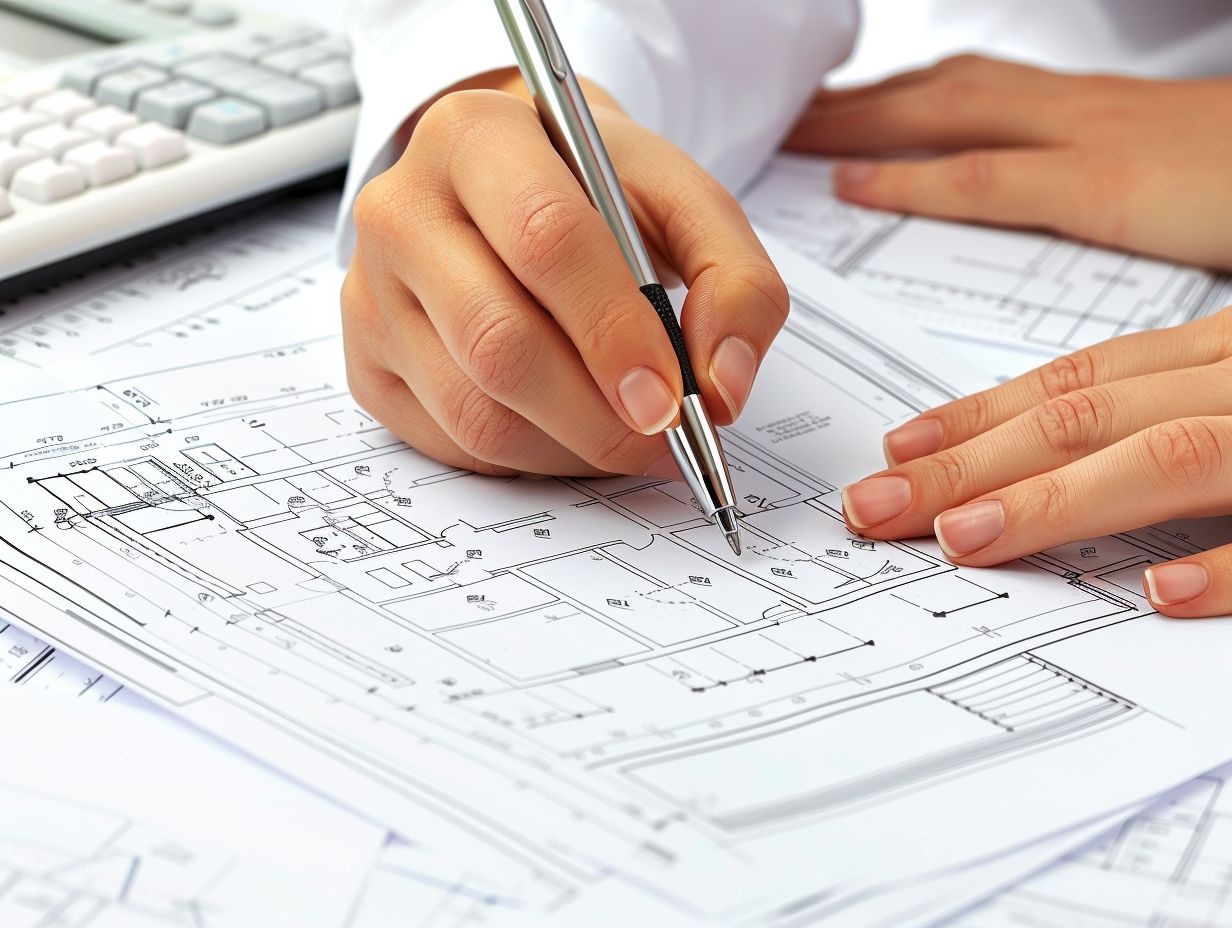
Blending Aesthetics and Structure: Custom Home Engineering in San Francisco
Custom home engineering is a multidisciplinary approach that combines the art of design with the science of structural engineering to create unique, functional, and aesthetically pleasing homes. In San Francisco, where space is limited and the natural environment is a significant factor, custom home engineering plays a vital role in enhancing the living experience.
From incorporating natural elements to maximizing natural light and creating unique architectural features, custom home engineering offers a myriad of benefits. The structural considerations such as foundation and soil analysis, energy efficiency, and safety are paramount in ensuring the longevity and sustainability of custom-designed homes in the city.
In this article, we will delve into the importance, benefits, aesthetics, and structural considerations of custom home engineering, as well as how it can enhance the living experience in San Francisco. Whether you are a homeowner, architect, or builder, understanding the principles of custom home engineering is essential for creating homes that harmoniously blend with San Francisco’s unique landscape and climate.
What Is Custom Home Engineering?
Custom home engineering involves the application of engineering principles and techniques to the design, construction, and structural integrity of residential properties, particularly in urban areas like San Francisco.
This type of engineering requires a deep understanding of architectural and design integration, where engineers work closely with architects and designers to ensure that structural elements seamlessly blend with the overall aesthetic and functional aspects of the home. The unique challenges of urban development in a city like San Francisco, characterized by its sloping terrain and seismic activity, demand innovative solutions to create resilient and visually appealing custom homes. Engineers must navigate strict building codes and regulations while incorporating sustainable and environmentally friendly practices to contribute to the rich architectural heritage of the city.
Why Is Custom Home Engineering Important?
Custom home engineering plays a pivotal role in realizing innovative, sustainable, and luxurious residential spaces that seamlessly integrate technological advancements, aligning with the unique vision and preferences of discerning clients.
It allows for the implementation of cutting-edge solutions that enhance energy efficiency, environmental consciousness, and comfort. The process involves close collaboration with architects, interior designers, and construction experts to ensure that the client’s individual aesthetic and functional requirements are met. By leveraging advanced materials, smart home technology, and eco-friendly practices, custom home engineering sets a new standard for bespoke living environments that prioritize both elegance and environmental responsibility.
What Are the Benefits of Custom Home Engineering?
Custom home engineering offers a myriad of benefits, including:
- Collaborative opportunities
- Creative freedom
- Enhanced functionality
- Unparalleled beauty
- Top-notch material quality
- Environmental consciousness
Homeowners who opt for custom home engineering can actively engage in the design process, shaping their living spaces to suit their unique lifestyle and preferences. This approach allows for innovative solutions, efficient use of space, and the incorporation of cutting-edge technologies, ensuring functional excellence. Custom-built homes enable individuals to express their personal style, resulting in visually stunning and architecturally distinct properties. By incorporating sustainable practices and energy-efficient features, these homes can contribute to a more environmentally friendly future.
What Are the Aesthetics of Custom Home Engineering?
The aesthetics of custom home engineering revolve around the seamless blending of structural and design elements to create bespoke interior and exterior spaces that captivate with their aesthetic appeal, embodying luxury, sustainability, and innovative solutions aligned with the client’s unique vision.
These bespoke homes are meticulously designed to integrate luxurious materials, advanced technologies, and sustainable practices, ensuring a harmonious balance between opulence and environmental responsibility. Client-centric innovations are at the core of this process, as architects and engineers collaborate closely with homeowners to manifest their individual preferences into the blueprint of their dream home, resulting in a personalized sanctuary that celebrates their lifestyle and values.
Incorporating Natural Elements
In custom home engineering, the seamless incorporation of natural elements into both interior and exterior design elements enhances the overall aesthetic integration, emphasizing the unique urban aesthetics and the thoughtful utilization of landscaping and lighting.
This approach not only promotes a harmonious coexistence with nature but also creates a serene and inviting ambiance within the living spaces. By integrating green spaces, water features, and sustainably sourced materials, custom homes can strike a balance between modern living and natural connectivity.
The strategic placement of windows and skylights allows for the optimal utilization of natural light, reducing the dependence on artificial lighting and creating a more organic, eco-friendly environment.
Maximizing Natural Light
Maximizing natural light in custom home engineering fosters aesthetic harmony, strategic spatial planning, energy efficiency, and the integration of innovative and sustainable solutions, elevating the living experience with an abundance of natural light.
Natural light enhances the architectural design, bringing out the textures and colors of the interior space, creating a warm and welcoming ambiance. The utilization of large windows, skylights, and strategically placed openings allows for the diffusion of natural light, reducing the need for artificial lighting and lowering energy consumption. The connection to the outdoor environment through natural light promotes wellness and improves the overall quality of life within the home.
Creating Unique Architectural Features
Custom home engineering thrives on the creation of unique architectural features, reflecting aesthetic expression, innovative construction techniques, and the seamless integration of bespoke design elements that elevate the overall aesthetic appeal.
These custom architectural features, often personalized to the homeowner’s preferences, play a pivotal role in the overall design, setting the home apart as a testament to exceptional craftsmanship and attention to detail. From intricate ceiling designs and statement staircases to bespoke window treatments and innovative material applications, each unique feature contributes to the personalized character of the home. They not only enhance the visual appeal but also showcase the ingenious engineering and construction methods involved in bringing these customized elements to life.
Balancing Form and Function
Balancing form and function in custom home engineering is a testament to the structural integrity, functional design, design flexibility, and the harmonious application of aesthetic principles to create spaces that excel in both visual appeal and practical utility.
This delicate balance requires meticulous attention to detail and a deep understanding of the interplay between architectural elements and the needs of the occupants. Custom home engineering goes beyond standard building practices, often demanding innovative solutions to accommodate unique design preferences while ensuring the structural soundness of the property. It’s a process that calls for collaboration between architects, engineers, and clients to seamlessly integrate practical and aesthetic considerations, resulting in homes that are not only visually stunning but also fully functional for the individuals who reside within them.
What Are the Structural Considerations in Custom Home Engineering?
The structural considerations in custom home engineering encompass a spectrum of engineering solutions that prioritize energy efficiency, modern, contemporary, and traditional design elements, and the utilization of sustainable and green building materials.
These structural considerations are crucial in fostering a sustainable and efficient living environment. Engineering solutions often center around optimizing space utilization, incorporating natural light, and implementing efficient heating and cooling systems. Design styles vary from sleek, minimalist modern designs to timeless and elegant traditional themes, accommodating a range of client preferences. The incorporation of green building materials, such as reclaimed wood, recycled glass, and sustainable insulation, reflects a commitment to environmental responsibility and resilience.
Foundation and Soil Analysis
In custom home engineering, the meticulous analysis of foundation and soil is paramount, requiring the expertise of structural engineering to ensure the seamless integration of construction materials within the framework of custom home construction.
This critical analysis serves as the cornerstone for the structural integrity and longevity of the custom home. Structural engineers assess the soil composition, load-bearing capacity, and environmental factors to determine the most suitable foundation design and construction materials.
The selection of appropriate materials, such as reinforced concrete or steel, is essential to address the specific soil conditions and seismic considerations, ensuring that the custom home is resilient and durable. By incorporating soil and foundation analysis into the engineering process, custom homes can be designed to withstand various external forces and provide a safe and stable living environment for the occupants.
Structural Materials and Techniques
The choice of structural materials and techniques in custom home engineering is a meticulous process that integrates innovative building techniques, strategic material selection, and the expertise of residential engineering to ensure the seamless integration of structural elements.
This harmonious blend of innovative building techniques, such as prefabrication and modular construction, along with the selection of sustainable and durable materials, plays a pivotal role in shaping the structural integrity and overall performance of custom homes.
The collaboration between architects, engineers, and builders becomes crucial in harnessing new and advanced building technologies, which not only enhance the structural strength but also contribute to energy efficiency, cost-effectiveness, and environmental sustainability in custom home engineering.
Energy Efficiency and Sustainability
Custom home engineering places a strong emphasis on energy efficiency and sustainability, necessitating the integration of sustainable practices, innovative solutions, home automation, and energy-efficient systems to foster sustainable construction practices.
This holistic approach encompasses the use of renewable energy sources, such as solar panels and geothermal heating systems, to reduce the home’s carbon footprint. The integration of smart home technology allows for the efficient management of energy consumption, optimizing comfort and reducing energy waste.
By implementing passive design strategies and utilizing sustainable materials, custom homes can minimize environmental impact while maximizing energy efficiency and long-term sustainability.
Safety and Building Codes
Adhering to local regulations, navigating the permitting process, and prioritizing safety in alignment with building codes are integral components of custom home engineering, ensuring the seamless integration of building elements within regulatory frameworks.
This adherence to building codes and local regulations is crucial to ensure the structural integrity and safety of custom homes. It not only guarantees that the construction meets the necessary standards for stability and durability but also enhances the overall safety of the occupants. By integrating these elements within the framework of regulatory compliance, custom home engineers can create spaces that are not only aesthetically pleasing but also structurally sound and secure.
It streamlines the permitting process, ensuring that the project progresses smoothly and without unnecessary regulatory setbacks.
How Can Custom Home Engineering Enhance the Living Experience in San Francisco?
Custom home engineering has the potential to elevate the living experience in San Francisco through strategic urban planning, innovative engineering solutions, contributions to urban development, residential projects, customized home renovations, and the meticulous integration of San Francisco’s unique aesthetics and the client’s visionary aspirations.
Such engineering solutions hold the power to shape the city’s landscape, enhance sustainability, and create living spaces that not only embody the city’s spirit but also cater to the functional needs of residents.
By blending architectural creativity, sustainability, and client input, custom home engineering can redefine living spaces, taking into account the historical significance and modern needs of San Francisco, ultimately adding value to the city’s urban fabric.
Maximizing Space in a Limited Area
Maximizing space in a limited area through strategic space optimization, meticulous custom home planning, structural customization, and the incorporation of urban aesthetics is a hallmark of custom home engineering in San Francisco.
This approach involves utilizing smart storage solutions, innovative room layouts, and multifunctional furniture to make the most of every square foot. Custom home engineers in San Francisco also prioritize optimizing natural light and ventilation to create a seamless connection between indoor and outdoor spaces. They focus on integrating sustainable and environmentally friendly materials to enhance the urban aesthetic while reducing the ecological footprint. These strategies reflect the adaptability and ingenuity required in custom home engineering to meet the demands of urban living.
Incorporating Views and Outdoor Spaces
Incorporating stunning views and outdoor spaces in custom home engineering allows for seamless integration of client vision, customized features, and the artful utilization of exterior features, landscaping, and lighting to create captivating outdoor living spaces.
This level of customization enables architects and designers to harmoniously blend the client’s vision with the natural surroundings, providing a living experience that perfectly encapsulates the beauty of the outdoors. The integration of outdoor features, such as decks, patios, and gardens, becomes an essential part of the overall design, creating a tranquil and luxurious atmosphere that reflects the individuality of each homeowner’s preferences.
Creating a Seamless Indoor-Outdoor Flow
Custom home engineering excels in creating a seamless indoor-outdoor flow through the innovative integration of aesthetic principles, structural innovation, unique design elements, and the thoughtful incorporation of technology, enhancing the overall living experience.
This expertise involves the careful consideration of spatial configurations, natural lighting, and the use of sustainable materials to connect the interior and exterior spaces harmoniously. Engaging landscaping, strategically placed windows, and expansive door systems create a sense of continuity, blurring the boundaries between indoor and outdoor areas.
By blending the latest smart home technologies seamlessly into the design, modern convenience is effortlessly integrated, enriching the lifestyle within the custom home environment.
Adapting to the Unique Climate and Terrain of San Francisco
Adapting to the unique climate and terrain of San Francisco requires the utilization of sustainable materials, collaborative client engagement, functional design elements, and a deep understanding of San Francisco’s architectural and sustainable construction ethos within custom home engineering.
This approach ensures that the homes not only complement the natural environment but also withstand the challenges posed by the city’s microclimates and diverse topography. By integrating sustainable materials such as reclaimed wood, recycled metal, and energy-efficient systems, custom homes can minimize their environmental impact and reduce energy consumption.
Collaborating closely with clients allows for personalized design solutions that optimize space and natural lighting, enhancing the quality of living while respecting the city’s architectural heritage and promoting sustainable construction practices.




No Comments